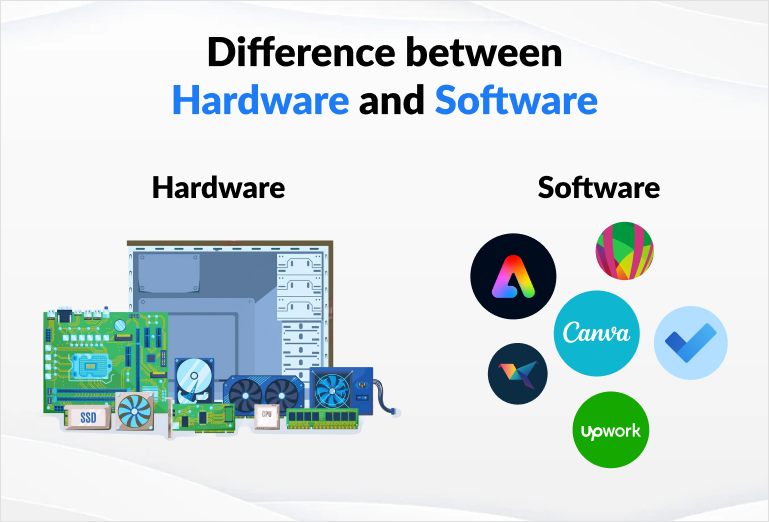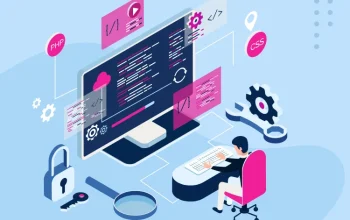Computer hardware and software are two major categories that comprise any computer system, with hardware comprising physical components while software being the code that executes instructions.
Hardware wears out over time, while software exists only virtually. This article will highlight some key differences between them.
1. Tangibility
Many computer users are well versed in software, while hardware may remain unfamiliar to them. A thorough understanding of their interplay is vital to business operations; hardware refers to physical components of computers while software instructs these physical parts how best to function.
Hardware refers to devices that can be touched physically, such as the monitor used to view this text or a mouse used for navigation on websites. Hardware also includes storage devices like hard drives that store data. Finally, hardware is often divided into input and output devices: input devices include peripherals used for entering information into computers such as keyboards or digital pens while output devices display results of their processing such as monitors or projectors.
Malleability, or the ease with which computing entities can be changed, is another distinguishing characteristic between hardware and software. If an algorithm is permanently embedded onto silicon chips or stored as C code on hard disk, then that would qualify as hardware; otherwise it would fall under software.
2. Functionality
Hardware and software can often become indistinct; both play an essential part in our everyday lives and work hand in hand together, but one cannot function without the other.
Hardware refers to all physical electrical components required for computer operation, from keyboards and monitors to printers and scanners; as well as internal parts like the CPU and GPU. Hardware can be divided into categories including storage devices, input/output devices, processing hardware and internal components.
Software on the other hand is a set of instructions that determine the functionality of hardware. Software can be divided into three main types: system, application and programming software. A key characteristic of software is its malleability; unlike hardware with predetermined algorithms etched onto silicon circuitry it would be much simpler and quicker to change an existing software program than to reconfigure its physical equivalent.
3. Malleability
Malleability allows hardware to adapt quickly to changing demands, encouraging agility and innovation. Furthermore, malleability facilitates user-driven development efforts which address real world problems or pain points more directly.
Process malleability is an essential element of future exascale systems. While fault tolerance solutions rely on application checkpoints and restarts, malleability requires real-time reconfiguration of processes based on monitoring software updates; its goal being resizing processes efficiently without negatively affecting performance.
Many malleability solutions have been created to address this problem, most relying on MPI frameworks like CHARM++, Torque/Maui or pbs_server for execution. One approach used in [66] takes a different route by using COMPSs runtime with multilevel C/R support for MPI applications and extends SCR mechanism to enable malleability; when restarted this malleable app can resize any number of processes (expand) or shrunk to specific size (shrink), precise redistribution of data as well as fast execution compared with SCR malleable apps.
4. Security
Even the most secure hardware can only be as strong as its weakest link, which means if one employee chooses an insecure password or leaves their laptop somewhere unattended, hackers may exploit that flaw and gain entry to company data and systems. To reduce risks, train employees on best practices for protecting sensitive information by encrypting it, locking workstations and taking other physical security precautions; create automated backup processes, store them offsite such as in the cloud and develop procedures to recover data after hardware incidents occur.
Many businesses rely on security software to safeguard their assets, but this can be compromised by scammers with higher rights through vulnerabilities in firmware. Security hardware offers better monitoring and protection against such threats than software alone can. Regularly updated firmware that includes new security patches can help prevent hacks of sensitive ecosystems; additional measures such as hardware firewalls or proxy servers may further strengthen protection.





